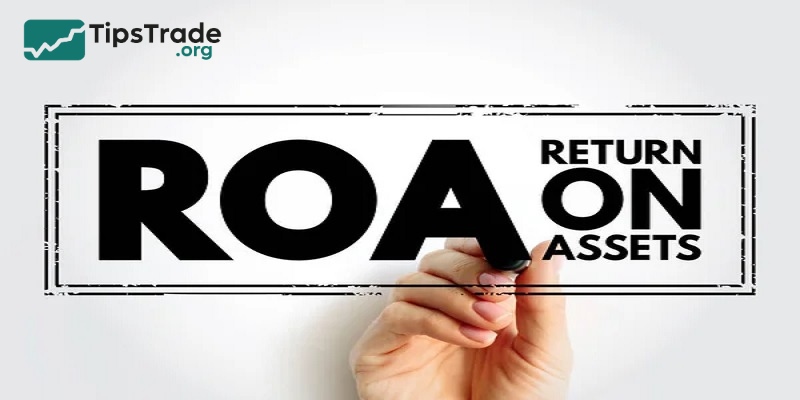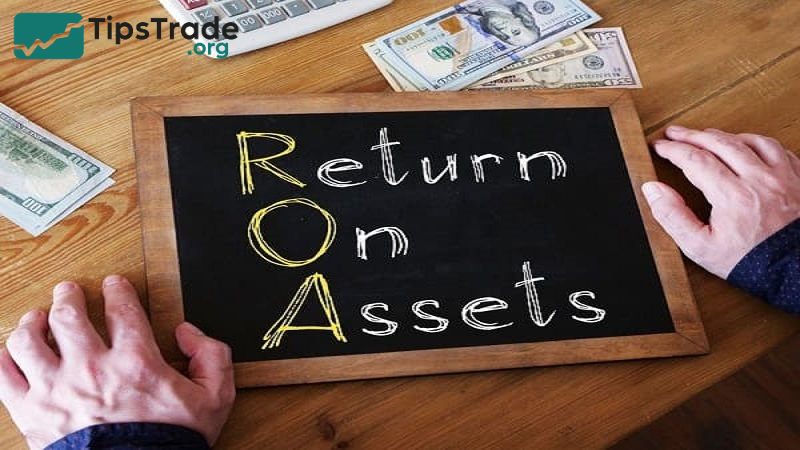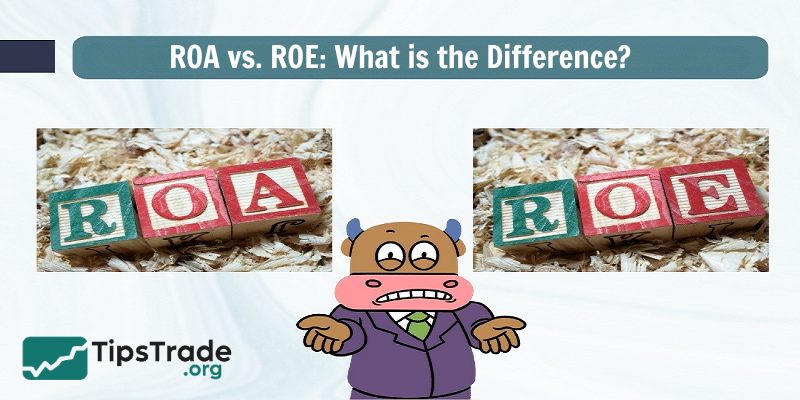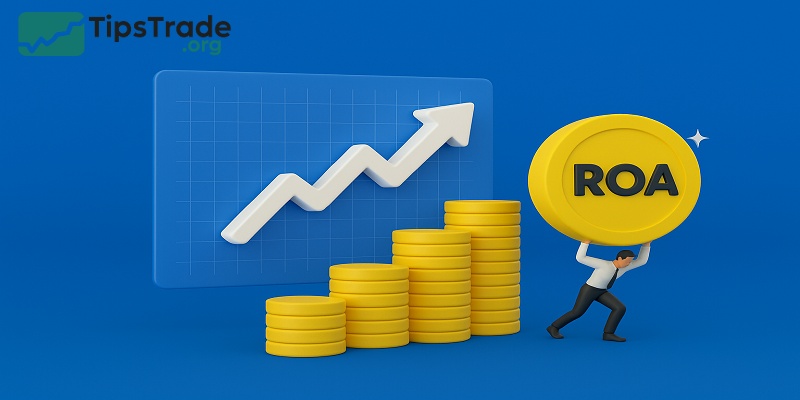ROA, or Return on Assets, is an important metric that provides investors with essential information to make informed investment decisions. So, what is ROA? What does it signify? How is return on asset calculated? Let’s explore this in the article below with Tipstrade.org!
What is ROA?
ROA (short for Return on Assets) is a financial metric that indicates a company’s profitability relative to its total assets. Business managers, analysts, and investors can use ROA to assess how efficiently a company utilizes its assets to generate profit.
Simply put, Return on Assets tells you how much profit is generated by each unit of asset. A higher ROA means the company manages its balance sheet more efficiently and productively to create profit, while a lower ROA suggests there is still room for improvement.

>>See more:
- Profitability Ratios – Overview and Types
- What is the Current Ratio? Formula and Examples
- What are Liquidity Ratios? 3 Liquidity Ratios You Should Know
- Debt To Equity Ratio: Understanding, Formula, and Practical Insights
Meaning of ROA index for businesses
The Return on Assets metric plays an important role in evaluating a company’s operational efficiency, particularly in how the company uses its assets to generate profit. Specifically, Return on Assets provides insights into:
- Asset efficiency: Return on Assets measures the profitability a company can generate from each unit of its assets. The higher the ROA, the more effectively the company utilizes its assets to create profit.
- Company comparison: Return on Assets is a useful tool for comparing the performance of companies within the same industry. A company with a higher ROA is generally considered to operate more efficiently than its industry peers.
- Asset management: Return on Assets helps managers and investors assess a company’s ability to manage its assets. A stable and high ROA often indicates that the company has a sound and efficient asset utilization strategy.
- Investment decisions: For investors, the Return on Assets is an important metric to consider when deciding whether to invest in a company. A high ROA is often a sign of a business with strong profit potential and lower investment risk.

How to calculate the ROA ratio
To calculate return on assets, take the net profit and divide it by the total assets, then multiply by 100 to convert it into a percentage. The return on assets indicates what percentage of profit a company generates from the total assets it owns.
Return on Assets = (Net Income / Average Total Assets) x 100
Where:
- Net Income equals net earnings for the period (typically annual)
- Average Total Assets = (Beginning Total Assets + Ending Total Assets) / 2
Let’s illustrate with an example. Say a company has a net income of $200,000 and total assets of $2,500,000.
Applying the Return on Assets formula: ($200,000 / $2,500,000) x 100 = 8%
=> In this case, for every dollar of assets the company has, it generates $0.08 in profit.
What are the advantages and disadvantages of ROA?
When using the Return on Assets ratio to analyze a company’s finances, you need to be aware of its advantages and disadvantages.
Advantages of ROA
The main advantages of the Return on Assets ratio include:
- Return on Assets ratio helps businesses and investors understand the level of efficiency in using assets to generate profits, thereby identifying strengths that need to be promoted.
- This is an easy-to-calculate ratio that can be used to compare the performance of companies within the same industry or business sector.
- For investors, the Return on Assets metric is an important measure to select businesses with good profitability from existing assets, especially when compared with industry average.
- Return on Assets uses basic parameters (net profit and total assets), easy to calculate and interpret even for people without deep financial expertise.

Disadvantages of ROA
In addition, the Return on Assets metric also has the following limitations:
- Return on Assets ratio is not perfectly precise and only reflects one aspect of a company, so it cannot provide a complete financial picture. To gain a more comprehensive view, Return on Assets should be combined with other metrics to better evaluate performance and make more accurate decisions.
- The Return on Assets metric varies significantly across industries due to differences in asset structures, so a fixed ROA level cannot be used to assess all companies.
- The Return on Assets metric should be monitored over a long period to evaluate trends, as profits are often volatile. In particular, this metric can be distorted by accounting methods that a company applies for its own purposes.

What is a good ROA ratio?
The role and significance of Return on Assets have been discussed, but what level of ROA is considered good? There is no specific number for this, as it depends on several factors, such as:
- The industry in which the company operates: Different industries have varying asset structures and operating methods. Companies in heavy industries, which require very large fixed assets, often have relatively low ROA. In contrast, companies in consumer goods or information technology tend to have higher ROA because they do not require large fixed assets to operate.
- Comparison with industry peers: Comparing Return on Assets with competitors provides insight into the company’s performance within the broader market and its specific sector.
- Comparison with past performance: To avoid the situation where ROA is declining yet still higher than industry peers, investors should track trends over time. This allows assessment of whether the company is using its assets more efficiently than in the past.

ROA vs. ROE: What is the Difference?
Investors often focus more on ROE (return on equity) because it reflects the efficiency of capital use along with the risk level of the asset structure. However, a high ROE paired with a low ROA can be a warning sign regarding a company’s use of debt.
The Return on Assets and Return on Equity are related through the leverage ratio, meaning that less debt is generally better. Ideally, the debt-to-equity ratio should be less than 1.
According to international standards, a company with ROE > 15% and ROA > 7.5% is considered financially competent.

However, to assess a company’s performance accurately, investors should evaluate these metrics over at least three years. If a company maintains ROE above 10% during this period, it is considered a good company. Similarly, the Return on Assets above 7.5% for at least three years indicates a potentially strong company.
Conclusion
ROA is an important metric for both business owners and investors, so understanding it can help you make more accurate assessments of business performance. We hope the information above helps you answer the question “What is ROA?” and assists investors in screening and selecting the right types of assets for investment. Remember, no single metric is fully effective on its own. Combining multiple ratios is necessary to make objective evaluations and minimize risks as much as possible.

